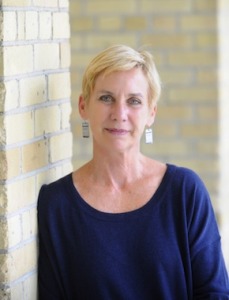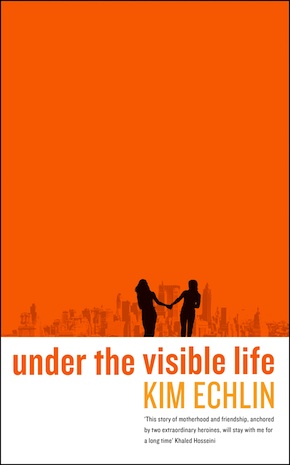Freedom suite
by Brett MarieFebruary 1st marks National Freedom Day in the United States. Initiated in the 1940s, the holiday commemorates Abraham Lincoln’s signing of the Thirteenth Amendment in 1865, which banned slavery. Its intent is to “promote good feelings, harmony, and equal opportunity among all citizens and to remember that the United States is a nation dedicated to the ideal of freedom”. But ask the average American how they plan to celebrate, and you’ll likely get a blank stare. Freedom Day is an orphan, largely forgotten, overshadowed yearly by everybody’s favourite stupid holiday Groundhog Day, and further upstaged this year by the Iowa Caucuses which kick off that quadrennial circus sideshow known as the presidential primaries. Most of us won’t celebrate much more than our right to watch a large rodent act as oracle to thousands of TV weathermen who should know better. Those few with their minds on nobler things are likely to be politicians seeking to curry votes using jingoistic platitudes that reduce the principles of Life, Liberty and the pursuit of Happiness to 140 flaccid characters. Thoughtful patriots out there might take a few minutes of their day to parse the Declaration of Independence or the Gettysburg Address. But I’ll save those hallowed texts for the Fourth of July; I’ve found something more fitting for the occasion.
Kim Echlin’s Under the Visible Life is a novel-length ode to liberty, a 348-page saga following the lives of two heroines, from opposite sides of the globe, who become united by their shared thirst for personal freedom. Moving her viewpoint back and forth in alternating chapters between the Afghan-born Mahsa in Karachi, Pakistan, and the half-Chinese Katherine in Hamilton, Ontario, Echlin charts her protagonists’ comings-of-age in the cultural straitjackets of Pakistan and Canada in the 1950s and 60s, before bringing them together amid the vibrant jazz scene of 70s New York City.
“What she is I am,” writes Mahsa to set the novel’s tone. The opening sentence, as we first perceive it, refers to Mahsa’s mother (‘Mor’) who defied her conservative Afghan family by marrying an American contractor and fleeing to Karachi. This act eventually costs Mor and Mahsa’s father ‘Abbu’ their lives in a brutal honour killing, leaving Mahsa to be brought up by her aunt and uncle, but not before Abbu instils in Mahsa a deep love for music – in particular the piano. Mor’s assertion of independence mirrors Mahsa’s eventual break with her extended family: sent to Montreal to study at McGill University, Mahsa changes her major from English to Music and begins to pursue life as a jazz pianist.
It is our heroines’ devotion to jazz which inevitably unites them, sealing them in a friendship which will help sustain them through their personal trials.”
But Mahsa’s opening declaration could just as easily apply to Katherine, whose Ma went through her own struggles in Canada after marrying a Chinese immigrant who subsequently fled back to his homeland. Ma relates her sad history to Katherine with little hint of regret, and Katherine inherits Ma’s strong will to do what she wants with her life, whatever the cost. Like Mahsa, Katherine finds her calling in jazz piano, and follows her dream along the Ontario club circuit, until a love affair with her sax-virtuoso bandmate blossoms into a marriage with children.
Katherine and Mahsa’s stories edge closer and closer, as each feels the magnetic pull of the nearby New York City jazz scene. It is our heroines’ devotion to jazz which inevitably unites them, sealing them in a friendship which will help sustain them through their personal trials. And Echlin handles the music with such verve (just you wait until you get to the paragraph that begins “The first day of my real life was when I heard ‘Dance of the Infidels'”), that it’s easy to get seduced by jazz as the book’s great theme. The Globe and Mail called Under the Visible Life “a love song to music itself”, while Jazz FM (predictably, I suppose) called it “a book about a passion for music”. But by letting jazz take centre-stage, these very positive reviews do a wonderful and important book a grave disservice.
As a musician raised in Montreal – and a former student at McGill – I suppose I was predisposed to relate to this book. There’s more to it than that. I come from a comfortably middle-class family. I was head of my class well into high school. Even when my guitar playing began to take priority over such trivialities as term papers and final exams, I was somehow able to hold enough of my grey matter in reserve to pass all my classes. It wouldn’t have taken much effort to run down the clock in school, and wave around my degree until someone offered me bearable employment at a workable salary. But to follow that route seemed to me a capitulation, an admission that my musical pursuits were just a hobby. To accept a career in the nine-to-five world would be to stamp out my rock ‘n’ roll dreams. A Bachelor’s Degree – in any field – would be written proof that I was a quitter.
And so in my freshman year at McGill I began to steel myself for my eventual breakout. Though I worked up enough academic steam to pass all my classes (I owed my parents at least that much), I made sure to use the last page of every exam paper to scribble out my call-to-arms, the last verse of AC/DC’s ‘Rock ‘n’ Roll Singer’ (key line: “You can stick your golden handshake/Stick your silly rules/And all the other shit/That you teach to kids in school – ’cause I ain’t no fool”). I used my family’s brand-new dial-up internet connection to research the New York music scene, emailing no-name bands to ask how much work they were getting in nightclubs around town. I spun their somewhat dispiriting replies around in my head until I’d wrung out every last drop of pessimism. And then, on my nineteenth birthday, I loaded my guitars, amplifiers and record collection into my dad’s station wagon, and we drove to New York. Dad thought he was dropping me off for the summer; I never suffered any such delusion.
Clearly my background in music makes me a sucker for a book like Under the Visible Life, and yes, I fell hard for Echlin’s music-oriented passages. I have no problem believing that a sax solo that sounds “like a man getting up out of his chair to take a woman’s hand to say, I wanna tell you something I don’t have words for, da-daa-da-daa-daa, da-daa-da-daa-daa” might leave a mother too mesmerised to stop her young daughter from breaking a dozen eggs, one by one, on the floor. But I fell harder for sentences like this, from Katherine’s arrival, three kids and a U-Haul in tow, in New York: “Next we were seeing the Empire State Building and the Woolworth Building and the Waldorf Astoria and I was feeling freer, lighter, happier than I had since Dexter was born.” I felt closer to Mahsa when she bubbled about her bus trips from Montreal to Manhattan (“I loved those New York weekends and arriving at the Port Authority Bus Terminal and my first smell of bagel and exhaust”), and giddier about Katherine’s first recording opportunity (“Me too excited to breathe, and who could I tell?”), than at anything either character had to say about music. It’s that pursuit of freedom, the chasing of all those gigs, recordings, love affairs and friendships that our heroines know they have every right but not nearly enough opportunity to experience, which touched me to my core.
This book is not just for jazz lovers. It’s for anyone who values their freedom, anyone who dares to dream.”
You might note that I am not a rock star today. I currently put more money into my music than I get out of it. I work a day-job to make ends meet, and I make far less than I would make with a degree. But though I have my share of regrets, my move to New York is not one of them. I have my wife and daughter to consider in every decision I make these days, but on some level I still feel like a free man. And there’s the final parallel that elevated Under the Visible Life to its special place in my heart: as time passed, as Katherine and Mahsa grew older and their lives and relationships changed, at every turn I could see their concepts of freedom and responsibility follow the same twists and turns that mine did as I followed my own arc, from nineteen year-old dropout with a dream, to married father with a purpose.
Echlin made an astute choice to use jazz as her backdrop (she chose it, she says, because “it is music that is improvisation-based, as Katherine and Mahsa must improvise their domestic and work lives”). But to declare Under the Visible Life a book about music is to close it off to scores of people who are indifferent to jazz. The desire to be allowed to make one’s own life is something that all people have in common. Katherine and Mahsa could have been aspiring neurosurgeons, and but for a few tweaks in setting and plot the essential story would have been the same. This book is not just for jazz lovers. It’s for anyone who values their freedom, anyone who dares to dream, anyone who’s ever been told they couldn’t do something and had the urge to do it anyway.
We can all read Mahsa and Katherine’s adventures and see our own struggles somewhere in theirs. We can be thankful for the freedoms we’ve eked out for ourselves, mindful of the hard choices we’ve made to earn them, and hopeful for the ones we might still be eyeing on the horizon. Finishing the book, I came back to Mahsa’s opening line, “What she is I am,” and thought, Hey, me too. I’m sure that in some way, all readers will be able to say the same.
 Kim Echlin is the author of Elephant Winter, Dagmar’s Daughter, Inanna: From the Myths of Ancient Sumer, and The Disappeared. She lives in Toronto. Under the Visible Life is published by Serpent’s Tail in hardback and eBook.
Kim Echlin is the author of Elephant Winter, Dagmar’s Daughter, Inanna: From the Myths of Ancient Sumer, and The Disappeared. She lives in Toronto. Under the Visible Life is published by Serpent’s Tail in hardback and eBook.
Read more.
Author portrait © Michelle Quance
Brett Marie, also known as Mat Treiber, grew up in Montreal with an American father and a British mother and currently lives in Herefordshire. His short stories such as ‘Sex Education’, ‘The Squeegee Man’ and ‘Black Dress’ and other works have appeared in publications including The New Plains Review, The Impressment Gang and Bookanista, where he is a contributing editor. He recently completed his first novel The Upsetter Blog.
Facebook: Brett Marie
@brettmarie1979


